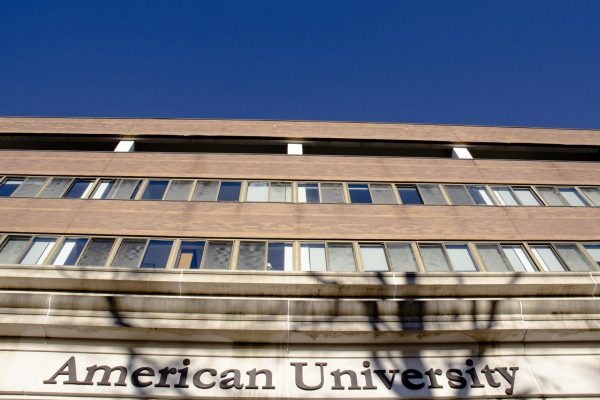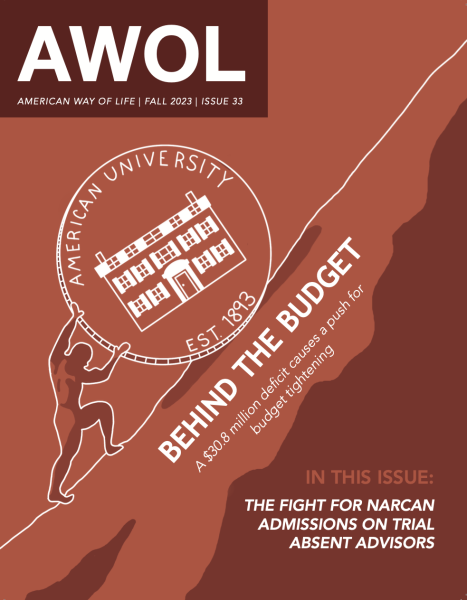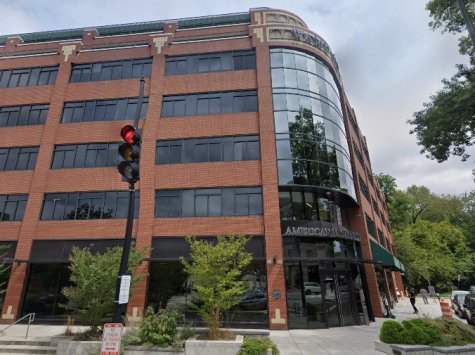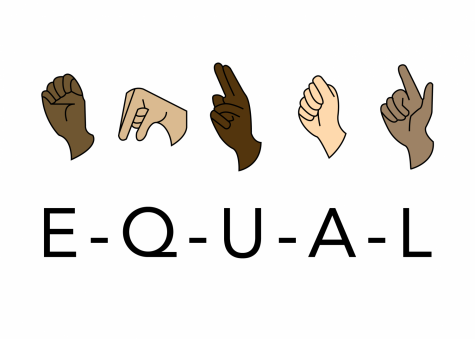Underpaid and Underrepresented: The AU Adjunct Experience
One of AU’s largest faculty populations still grapples with the same issues they unionized to fight against nearly 9 years ago.
This story first appeared in the Fall 2019 print edition of AWOL.
Derek Tokaz would like to put some savings into the 401(k) plan his adjunct benefits include. Unfortunately, he doesn’t make enough money to put anything into it.
Adjunct professors at American University make up about 41% of the faculty. Among those that teach at the school, some feel that they are not fully members of the university community. Between communication issues and unrealistic expectations for adjuncts, the result is a skew of opinions about their place at AU.
Tokaz is an adjunct in the literature department. He said that adjuncts are “less of a resource that the university has and more like a cost be managed.”
Tokaz has been working for AU since 2015 and said he’s frustrated with some of the university’s practices.
Adjuncts put in many hours of work, but the university only allocates a small part of tuition revenue to an adjunct salary.
“Just looking at the sticker price, I make less than 5% of the tuition,” he said.
The total price of attending AU was $64,234 in the 2018-19 academic year, according to collegefactual.com.
An adjunct professor at AU can earn anywhere from $3,230 to $16,173 per year, according to Glassdoor.
Tokaz also said he feels that there isn’t an explanation for some of the university’s policies. One particular policy holds that adjunct faculty, who are hired per course, can only teach a maximum of three classes per year. Term faculty, who signed a three-year, full-time contract, can teach six classes. Tokaz doesn’t know where the rule even comes from.
“It’s not in our contract,” he said.
There are two types of adjuncts, according to Tokaz. The school has a PhD-adjunct pipeline that enables PhD graduates to teach at AU. As a result, many adjuncts have recently graduated, leaving them in a financially vulnerable position. The other type of adjunct is made up of retired veterans with specific disciplines.
“If you’re a retired senator, you’re going to be getting paid more than the person who’s a fresh PhD,” Tokaz said. “They see teaching as sort of like a community service, where they want to give back.”
From attending a meeting over the summer, Tokaz found AU’s adjunct salaries were calculated down to a weekly basis of seven hours per week of work.
Breaking down his average week, Tokaz said he spends three and a half hours between classroom time and mandatory office hours, leaving him with a total of three and a half hours to grade papers, plan lessons and read any supplementary materials.
In 2012, adjunct faculty voted to join the local chapter of the Service Employees International Union. Despite a consistently renewed contract with the union, which mainly operates through a bargaining team of adjunct faculty, Tokaz expressed discontent with the union.
“Nobody knows what the union’s doing,” said Tokaz. According to him, the union set up a labor management committee a few years ago, designed to handle non-contract matters.Tokaz said his only communication with the union was a single email. There is also no information about the union on the AU website.
But the union seems to have made significant progress for adjuncts since 2012. The union succeeded in increasing wages and opening professional development opportunities within AU, according to Anne McLeer, Director of Higher Education at SEIU 500.
In the past, student evaluations carried significant weight in the rehiring of adjuncts. This often put professors in the hot seat if a student received an unsatisfactory grade, but the union’s efforts took the pressure off.
The union has given adjuncts a voice, McLeer said, because SEIU 500 mostly fulfills an administrative role by facilitating focus groups and giving surveys to understand adjuncts’ needs.
Communication with faculty can be difficult and can be a slow progress, McLeer said
“It’s difficult to have a meaningful conversation with everybody,” McLeer said.
With about 650 adjuncts, McLeer says making contact with all of them has been difficult. Tokaz and McLeer agree that more people need to participate in the union for it to effectively do its job. Whether it’s on the union to be more communicative or the adjuncts to participate more is unclear.
McLeer also said that change often cannot happen overnight, particularly because some of the controversial issues facing adjuncts have existed for 40-50 years. While the union has done a lot for many schools around the District, including AU, it is difficult to combat some of the longer-term trends.
Before the union, similar issues facing adjuncts were widespread across D.C., McLeer said. In 2012, George Washington University, which unionized with SEIU 500 not long before AU, also reportedly suffered from many of the same problems, such as low wages and little to no budget for professional development.
“There was a high reliance on adjunct faculty,” McLeer said. “They were teaching somewhere between 30-40% of the courses.”
A lot of these issues represent long-term trends, which can make them very difficult to stop.
Nationwide, part-time faculty made up 40% of professors in 2015, according to the American Association of University Professors. Since 1975, tenure and tenure-track faculty have decreased from 45% to 30%, showing a heavy reliance on tenured-professor alternatives like adjuncts.
However, adjuncts do not form a monolith. Trace Lasley, a Justice, Law and Criminology adjunct, has a different view on some of the same issues. He works another job in addition to being an adjunct, which partially alleviates the financial burden.
“I definitely feel like I’m part of the AU community,” Lasley said. “I know most of the administration here by name, and they’ll reach out to me from time to time for different speaking events.”
Lasley said he was aware that some adjuncts, including veterans, did not feel as connected.
Lasley said he is also part of the Homeland Security Policy program, which is a relatively small, tight-knit group of faculty.
Despite the confusion and different perspectives all three had on adjuncts’ place at AU, they all generally agreed that more representation would be better for everyone.
If the union and adjuncts can work together properly, one of AU’s largest groups of faculty could form a powerful voice at the school.
“As the years go by, we’re building in strength,” McLeer said. “But we’re only as strong as the people who make up the union.”
Teddy Everett is a sophomore studying journalism.












